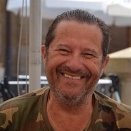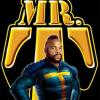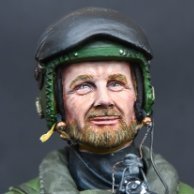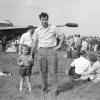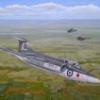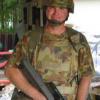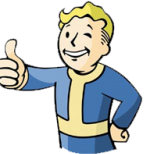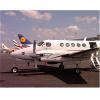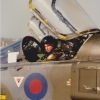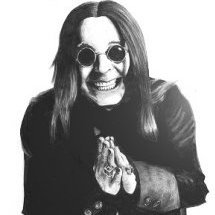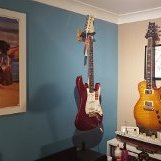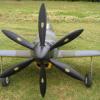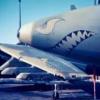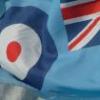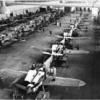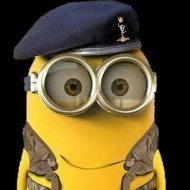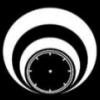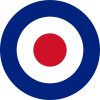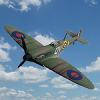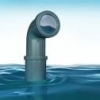Leaderboard
Popular Content
Showing content with the highest reputation on 04/10/17 in all areas
-
Just wanted to share some pics of one of my latest finished models. Supermarine Seafire FR.46, LA546 / 600 LM, RNAS Lossiemouth, 1948. From the Special Hobby kit #72231, just added a few details in scratch, a new instrument panel, scribed some lost panel lines and rivetted the whole airframe. Here's the model: And a picture of the real thing... Hope you like it! UnCarlitosModelista21 points
-
This is my recently completed 1/72 Academy F/A-18E. The kit was completed OOB using kit decals. Painted using MRP Paints with Gunze Mr. Color for the tail. Weathering was done with oils.18 points
-
Hi folks! After the Albacore, it is time to show my Firefly! The first one, with the figurine, was crashed when the shelves of the cabinet fall, so I had to do it again, and that's the second one! Best regards, jean; DSC_0052_2 by jean Barby, sur Flickr DSC_0050_2 by jean Barby, sur Flickr DSC_0049_2 by jean Barby, sur Flickr DSC_0048_2 by jean Barby, sur Flickr DSC_0047_2 by jean Barby, sur Flickr DSC_0046_2 by jean Barby, sur Flickr DSC_0045_2 by jean Barby, sur Flickr DSC_0044_2 by jean Barby, sur Flickr DSC_0002 by jean Barby, sur Flickr DSC_0001 by jean Barby, sur Flickr DSC_0008 by jean Barby, sur Flickr DSC_0007 by jean Barby, sur Flickr DSC_0005 by jean Barby, sur Flickr DSC_0004 by jean Barby, sur Flickr DSC_0003 by jean Barby, sur Flickr DSC_0002 by jean Barby, sur Flickr DSC_0001 by jean Barby, sur Flickr17 points
-
Thanks John If 'the look' doesn't work any more, have you tried the 'pointed ahem'? I bet you have, of course. After some years such pleasures tend to be denied us... I didn't get a Walrus. Still stubbornly staying with 1/72! Thanks Ian We've only had one, slight issue and that's because the printers are also here... Mrs B was cutting and pasting (real world, not computer) some paper on the edge of the new workbench before I'd finished positioning items... but, after offering to try to leave an edge free she's agreed to use the floor if necessary. Phew. At last, some progress: Untitled by Ced Bufton, on Flickr The iPhone camera seems to like the natural light doesn't it? Micro Sol applied to those so it'll have to be left for a while but then it's: spray a matt coat fit the engines fit the gunner, gun and windscreen fit the landing lights underneath de-mask (yay!) frame the windscreen with Filmoplast strips. I've just checked the screen and, luckily, it's all RLM71 around the canopy so that's one good thing. I'll have a look for some reference shots of the canopy framing - fingers crossed it's not too complex.12 points
-
BAC Lightning F3 53-692/L 13 Sqd RSAF, Tabuk 1977 Ok so just finished this today and rather pleased with the outcome! It is one of two Saudi Air Force machines they did in camouflage in 1977 - this being the one with the wrap around camo. The other one had a sky blue underside with camo top. It is the Airfix F6 kit and I used Model Alliance decals and some aftermarket for the bang seat. Paints are Tamiya and Gunze and Alclads and I am particuarly pleased with the nose ring as I must have re-done that 10 times to get it right! Chris ty pleased with the nose ring as I must have re-done that 10 times before I got it11 points
-
In 1938 Vultee were engaged in developing a range of aircraft that shared some common components (eg rear fuselage, wing panels) and tooling. One of these aircraft became the Vultee BT13 Valiant trainer and another, the model 48, eventually became the Vanguard fighter. The Model 48 first flew in September 1939 and seemed to be aimed at the export market. Performance wise it was a bit faster than the Hurricane, but had a lower ceiling. 140 of a modified version were ordered by Sweden to bolster its obsolescent fighter forces in 1940, but before deliveries began the US Government embargoed them. It was then proposed that the British could use them as fighter trainers in Canada and about four were allegedly finished in British markings. This also fell through and a handful were used as trainers by the US with 129 being sent to China, where they saw some combat. Information on the web or in print is limited to a handful of photos that seem to crop up all over the place and some fairly short pieces of text. The model is from the 1/72nd Sword kit that was released as a short run kit in 1998 and I think I bought it at that years Scale Model World, which shows the speed at which I work through my stash and is the same kit that AZ Models released in 2008 so far as I am aware. The kit has is mostly injection moulded with reasonably fine surface detail with a resin interior and exhaust and some photoetch for u/c doors, instrument panel (with film instruments) etc. and two vacform canopies with well-defined frames. Like most sort run of the time there is a lack of finesse in some of the moulding of the smaller parts with some flash. The prop hub suffered badly in this respect and rather than try cleaning it up to attach the separate blades, I found a suitable prop in the spares box and shortened the blades to match those in the kit. Building the kit did not produce any real difficulties for me. Being short run there were no locating pins so holes were drilled in the fuselage and tail surfaces to accept brass rodding to give some strength to the butt joints, the trailing edges of the wings and tail needed a bit of thinning. The wings being a three-part affair with a one-piece lower wing tip to tip and two upper halves. The wheel wells needed boxing in and the location hole for the undercarriage legs was just a shallow dimple that needed drilling out. The fuselage edges sanded to produce a good join and amazingly the resin cockpit interior fitted with only a bit of fettling. The only part that needed some serious work was the wing fuselage joint, but I have built mainstream kits that were a worse fit. The vacform canopy once trimmed went on alright, helped by very clear frame lines. I am convinced that the way to deal with vacform canopies is to make sure they are cut with a new blade and are masked to a) protect the canopy and to give a clearly defined cutting line. They also need patience as I have found that even a relatively small amount of trimming can make a big difference in the fit. The paint work caused some difficulties in terms of interior colours. I found one colour phot of the prototype being assembled that seemed to show a dark green colour being used and went with that. The undercarriage doors and wheel wells were painted in Zinc Chromate Yellow as that looked a possibility from the photos. The camouflage colours were a lightened version of Tamiya Sky and Humbrol acrylic 29 for the Dark Earth and 116 for the Dark Green. Looks slightly different if you place it next to something in MAP Temperate Land Scheme, but not very. Decals came from old Modeldecal sheets as the kit decals were out of register and a bit bright and the serials fell to pieces. Hope you like it10 points
-
My finished build of Mengs Shilka ZSU-23-4. Model depicted as a tank been used during the Syrian conflict/civil war. Stock build, painted with Tamiya Paints (custom yellow), weathered with lifecolor Liquid dust pigments and Ammo dust pigments. Will be building a suitable dio base for it.10 points
-
Hi All, Finished up my Tamiya 1/32 scale Mosquito. Had loads of fun building this kit and the precision of Tamiya is amazing. Had some aftermarket extras on the kit, namely Eduards interior and exterior photo etched parts, resin wheels, Nose and Belly guns. Decals are from EagleCal Hope you like it10 points
-
Hi all! The latest in my series of types built in Latin colours. This time an F-80C Shooting Star operated by the 1st Grupo de Combate, Fuerza Aerea Colombiana (Colombian Air Force), and based at Palanquero Air Base. She is depicted as she appeared when participating in “Operación Solidaridad”, which was a joint US-Latin forces exercise in March 1961. At that time she operated with others from Howard AFB, Panama. Other countries that participated were Peru and the USA. This is how she was at that time: The model is the Sword F-80C and is reasonably straight forward to build. Contrary to some reports, it needed little filler but did need some trimming and sanding here and there to get her reasonable. The biggest change from the kit is a addition of Fletcher wing tanks. So, what did I do/use?: Sword F-80C kit Hasegawa T-33A wing tanks. These need a slight mod by bringing the fins forward. They are inaccurate as they come in the kit. Paints were Humbrol enamels – 27001 Aluminium metalcote overall, 209 Fluorescent Fire Orange, 21 Black, 226 Interior green, and others for small parts. Then Mattcote (for the dayglo) and Glosscote (the remainder) Decals were Armycast (for T-33 "Silver Star") plus the kit stencils and home printed serials and codes. The badge (home printed) on the port side was an exercise “zap”. I had no Spanish stencils so used the kit ones. Weathered with Flory Dirt Here she is: I hope you like her. Martin10 points
-
The 1:72 scale Dragon MiG-17F built in the markings of the Egyptian Air Force at the time of the 1956 Suez Crisis. Not many parts to this kit, so not hard to build. Paint used is Tamiya XF-16 Aluminium. However, the recognition stripes on the wings were a different story, Tried decals at first, but couldn't get them to fit right, so took them off and tried painting the stripes. That did not work at all. Sanded them off and tried again with decals, which worked ok. Rear fuselage stripes are off a Hobby vraft decal sheet, wing roundels are also off a Hobby Craft decal sheet, and fuselage roundels are from Hi Decal and I did break one while applying it. Build Progress Photos MiG-17F-53 by Ryan Hothersall, on Flickr MiG-17F-54 by Ryan Hothersall, on Flickr MiG-17F-55 by Ryan Hothersall, on Flickr MiG-17F-56 by Ryan Hothersall, on Flickr MiG-17F-57 by Ryan Hothersall, on Flickr9 points
-
Very nearly ready to re-apply primer now: The process of removing the paint from panel lines has been bit of a faff - almost like re-scribing the whole lot, though with a bit more control since the line is at least already there, and the paint is relatively soft. In this shot the near wing has been done and the far wing not - the difference was a lot clearer to the naked eye! Plus of course the whole thing then micro-meshed within an inch of its life; Shiny The Seafire!: I still have to strip a few bit not yet fitted (undercarriage doors and one of the radiators), but I am now almost back to where I was a few days ago!. Crisp9 points
-
Couldn't resist. First snowfall in Southern Alberta yesterday so here's the Jagdpanther sitting in the snow, lots of crust and only -1C this afternoon. Yes it's real snow and lots of ice.8 points
-
I've been working on this for the last month or so as part of a Spitfire group build with a couple of local modellers. Kit is Eduard and I'll be using decals for a 310 Sqn bird with invasion stripes from AML. So far the build has gone on without a hitch with perfectly fitting parts and excellent detail. Cockpit was painted with Mr Color lacquers and weathered with various enamels, oils and pigments. Then the fuselage was closed up and the transparencies were masked in preparation for paint. The model was then primed with Mr Color Surfacer 1200 from a rattle can and pre-shaded with Mr Color tyre black. For the camouflage colours, I used Mr Color's mid to late war RAF camouflage colour set. The bottom was sprayed in medium sea grey and the top in ocean grey and dark green. As the actual aircraft camouflage was done using rubber masks, I decided to use a masking tape to simulate the hard edged camouflage that resulted. I also masked and painted the yellow leading edges by firstly applying a white base followed by the yellow. The propeller was painted with a light green from Mr Color's Gundam range which closely matched the RAF sky colour and flat black with yellow tips. Decals were then applied over a gloss coat. This last photo shows the current state of play with the masking for the invasion stripes being applied. Mark7 points
-
The old Tamiya kit. Tracks are from Academy M3 Grant as original were missing from the kit. Added metal barrels and Eureka tow cable. Now there is new Takom on the market and probably won't be to many occasions to see this kit again.7 points
-
I'd like to share a few pics of my latest build. This is Academy's kit of the P-47D from the special "Gabreski" boxing (which also includes Francis Gabreski's F-86). The kit itself is typical of Academy's mid-1990s releases - meaning nice but simple surface detailing, and some soft and perhaps spurious landing gear and cockpit details. The decals; however, are by Cartograph and are really very nice. I used the supplied invasion stripe decals, and they fit perfectly. Apply with confidence! The kit is painted with Tamiya's RAF colors. Along with flat red, flat yellow. Details were painted with Vallejo paints. I kept weathering to a minimum, as I didn't want to take away from the camouflage, which I think came out pretty nicely. I gave the model a wash of burnt umber oil, added a few paint chips, and that was about it. The camouflage was done by thinning the paint to an almost watery consistency, setting the PSI as low as it could go, and then detaching the paint bottle once some paint got inside the brush nozzle. Then I just lightly misted it on. It was really fun. I used my old Paasche VL brush with the fine line attachment. The story behind this aircraft. Francis Gabreski (28 kills) had finished his tour of duty in England in July of 1944. Shortly before he was return to the States, he asked to fly JUST ONE MORE mission. The escort mission was uneventful, but on the return leg, Gabreski decided to hit the dirt and went down to strafe an airfield. During his attack run he literally hit the dirt, and bent his propeller. He was forced to crash land and was made a POW.7 points
-
I finally caught up Tony ! Good to see that the beaching trolley arrived safely. I’d been a little concerned; When Mrs. T. took it to the post office here, the assistant made out a ‘tracking slip’ writing the destination country as ‘Iceland’ 🇮🇸 . I don’t know if the assistant had frozen potato croquettes or Arctic Roll on the brain at the time . Mrs. T. Noticed this mistake and a second ‘tracking slip’ was created with the Emerald Isle as the intended destination. Back at home, stuck as usual in the old boudoir, I received two ‘tracking’ emails from the post office. One telling me of a parcel on its way to Iceland and one to Ireland. I do like to have a nice worry and/or catastrophise whenever possible these days (it’s the most exercise I get), thus I spent the whole time with a slightly furrowed brow. I had a mental picture of Viðar Steinsson (renowned shark fermenter) settling down to a plate of Súrir Hútsprungar and a nice glass of Brennivín. Casually opening his morning’s mail in the darkness, he finds a parcel from Australia containing a resin beaching trolley for a WWII seaplane. This, according to ancient Nordic myth, is actually a sign that ships aligned with the Hanseatic League are going to imminently invade at Djúpivogur !! This would have upset Viðar’s breakfast and most likely have caused an international incident, on a scale far worse than any Armageddon that could be set in motion by a Tweet . Neverthless, as we can see, it went to the correct Island in the northern hemisphere, avoiding the possibility of the end of all human life, this allowing Viðar to tuck into his Súrir Hútsprungar with gusto . I appear to have gone off on a tangent. It’s still quite dark in here you know. Anyway, superb progress on the old Dornier . The interior work is sublime, a pleasure to watch it being built. All best regards TonyT PS: Nice truss7 points
-
Hi, Next odd German - Messerschmitt Me 321 B-1. Winter camo from Crimea (EDIT: according one source, accordingly to another from Smolensk area), 1943. Configuration - almost ready for take off. The W6+SW - decals from box, but in box the summer scheme is presented. Modification of kit is in front wheels, which in kit are single and on photos they double and in bottom of fuselage (which is flat in model). I thought, that I will give some lead to nose, but I measured it and it should be about 330 g. I quit, since it will perhaps required many enforcement of whole model and especially wheels. Comments welcome and regards Jerzy-Wojtek6 points
-
BLACKBURN NA39 Holme on Spalding Moor, 1959 Nostalgia or what? I think I was about 11 or 12 when I first build one of these, having saved my pocket money to find the substantial sum of 4/6 before going into the local Woolies to buy one after school with great excitement. This one was built about 7 or 8 years ago but recently came out for dusting and a photo session. I kept most of the original working features apart from the silly retractable nosewheel (with fixed doors and fixed main gear!) In fact the undercarriage on this one is from the later Airfix Buccaneer S.2 kit. I went a step further and added working airbrakes – Airfix chickened out on this in their kit, presumably because of the complexity. I based the working airbrakes on an article in an old Scale Models magazine which I had intended to scan and post here, but I couldn’t find it! The folding wings lasted a bit longer this time around – back in the early 60s they suffered from too many carrier landings on the HMS Dining Room Table and needed repair after a day or two. Anyway it was enjoyable to build something with a bit of artistic licence for a change rather than bothering about scale and accuracy. Chris6 points
-
Now, I'm presenting you a model for this week. It's a Bloch MB152 aircraft model, Smer, or Heller. I note that the cabin glass is not finely glued, but is only fixed with a white glue. The complete glass in the box was full of flashes, and the middle part of the cabin lid and the windshield were quite twisted. After cleaning the flush with the same, I tried to fix the lid by heating, but poorly. Overall, I am happy that the model looks in the shelf. Here's the picture.6 points
-
Hi, I was announcing that my next finished will be Potez 29 but it is "29", but B 29. I started this model in Christams 2014 and then it was in a kind of freeze... Now I finished (intending to present "Bockscar" while made his atom mission over Nagasaki - so without nose art etc. ): I made both bombs included in box ( abit reshaped and upgrated): "Fat man" and "Little boy" I have to do a kind of stand, but not done yet. Perhaps a trolley, but I do not have drawings for it... Comments welcome Regards Jerzy-Wojtek6 points
-
I finished this one last year, I thought I had posted images but can't find a thread. It is the venerable Hasegawa P-3C kit converted to a P-3B. I used a locally produced conversion set which included the searchlight and a blanking plate which replaced the sonobuoy chute panel piece. I also used a locally produced weapons bay (from the same manufacturer). This aircraft (A9-300) was damaged beyond repair by a cockpit oxygen fire during maintenance in 1984 and was written off.6 points
-
I have sprayed the topside cam with Hu224 and Hu117 and will be sealing it up next for decal application.6 points
-
Badder Here is your Stug III in the same snowbank. Looks kind of overwhelmed. Those poor buggers must be freezing in there as I don't think they had heaters.6 points
-
Hi Folks Another T33 from Academy,finished with Experts Choice decals,Xtracolor HSS and for the high gloss finish Windsor and Newtons acrylic varnish.Various bits of black toned down on the matt painted areas with Revell matt varnish. Aircraft depicts an aircraft attached to the 5th FIS. Ian5 points
-
OK, here we go again: Alclad Black Primer & Microfiller - I love this stuff! The underside will receive a similar squirt of white tomorrow, then I can get back to painting yer actual colours. Crisp5 points
-
I still look at the likes of hendie's soldering work and then go back to mine and wince... Thanks for the Musketeer linkage! Now I know you're a Goth at heart Mr. Tiger.... People only hear what they already know and seem incapable of absorbing new information sometimes Mr. T. About three or four years ago I ordered a pair of wetsuits for our lads from Decathlon, which due to the complexities of international commerce, were ordered from Belfast but had to be shipped from London to reach us here in Ireland. Wetsuits don't arrive so ring the London office to ascertain the problem. Hapless employee no.1 had no idea they even delivered to Ireland and no clue what to do about it so passes me onto supervisor. Supervisor spends 10 minutes tapping at a computer before informing me that order was held up because I hadn't specified the island it was being delivered to, eg. Shetlands, Isle of Wight etc. Explain that although I technically do live on an island, the last line of the address is actually 'Ireland', and has been internationally recognized as a country for some time now. Supervisor: 'But isn't that just part of Britain, like Wales?' Cue Heroes of 1916 rotating in their graves at sufficient rpm that they can be connected to the Irish electricity network and power half of S.Dublin for three days... Only a matter of time before UK television enters a new low era with Sandy Toskvig and Boris Johnson hosting Great British Ferment Off on C4. Can I put you as a reference on my next job application form Ian? I know the feeling Homer. I live in mortal terror of my system no longer being able to tolerate quantities of gin, which to my chagrin, appears to be the case increasingly these days.... No progress to report tonight as a long day still to go, however a little civilized reading over lunch at the desk: Tony5 points
-
To be honest I am not sure what’s been going on with the Vallejo. As I said earlier, I readily acknowledge that many people get a great finish with the stuff, so clearly the issue is how I have been using it rather than anything inherently wrong with the paint. None the less, I tend to get the same or similar problems each time, so... Just to muddy the waters a little further, I have found a marked difference between the Sky and the EDSG when stripping it. The EDSG pretty much wiped off when confronted with a cotton bud and some IPA; some - but not all - of the Sky proved tough to shift (though it’s all gone now). The only difference between EDSG and Sky coats was a tiny amount (c.3 drops?) of Vallejo's own thinner added to the EDSG. I suspect that the real reason is that the paint is unforgiving; get it spot on and it’s fine, but even a small change can be fatal. That’s all very well, but not very helpful for those of us who are still very much learning the subtleties of good painting. I reckon I have become a pretty decent builder of models, but I still have a long way to go on the painting side. No doubt if I persevered I could crack it - but this is a mojo build; I don’t want the risk of a paint, strip, try again, etc cycle. Even if it goes well, I don’t want the worry that each time I paint it may or may not be be a wasted day; this is supposed to be fun! So I have falken back on stuff I’ve used before & which I trust; Tamiya & Gunze (plus maybe some Alclad primer).5 points
-
hiya! been awhile since I updated this! - after the base coat I thought id have a go at weathering with oils, first to break up the base colour a bit: then after further blending, i worked on weathering the exhausts and gun barrels - still not entirely happy with the exhaust weathering, so after it dries i might try another layer on the underside. I wanted a well worn look for a post-bay of pigs aircraft that had seen a lot of action:5 points
-
Tony, you're in the wrong job, whatever that may be! Tweet on MacDuff(er) Ian5 points
-
Good save Crisp. I'm with PC on this - albeit with the variation of lacquer fumes - and agreeing with you on the whole Mr Colour/Tamiya/Mr Colour levelling thinner thing Crisp - and in the knowledge that (unlike our young American friend) I'm probably past the point at which I can properly be said to die young.....early - yes; but young - no.....5 points
-
Hello for everyone. When an idea is presented, we analyze the feasibility and design technician solution containing all basic elements of the new product and new models project. I have the pleasure to welcome all modellers, guests, participants and friends to the fourth of my WIP here on a forum and to the new one topic. I am looking at the watch, getting a bit worried because I think it is necessary to inform you today about how I intend to approach the work on for the triple AVRO 707 assembly. To tell the truth, I really like a British aircrafts and jet fighters also. The first step is still created in the traditional way: - Open boxes; - Spare parts inspection for the general condition; - Read the manual; - Close the boxes and forget all above (especially text instruction content)... To be continue... Best regards. Andrii4 points
-
Finally, after 4 1/2 months of joy, pain, money, hair pulling and rows with she who must be obeyed I have finally finished my first model! Pretty happy with how this turned out. More than a few errors but nothing that stands out unless your nose is touching plastic! The kit was ok but nothing special. Lots of flash and quite a few badly fitting parts as well as accuracy issues but not an absolute dog either. Few scratchbuilt parts including the masts, additional and revised rigging, extra detailing on the forecastle deck and bridge. Hopefully i've addressed a few of the accuracy issues but many remain. Still, it looks a lot like the Titanic. And i'm glad of that because the ship was a beauty! The WIP: Some pictures of the model... Generated from my Apple iPad using tools.rackonly.com Generated from my Apple iPad using tools.rackonly.com Generated from my Apple iPad using tools.rackonly.com Generated from my Apple iPad using tools.rackonly.com Generated from my Apple iPad using tools.rackonly.com Generated from my Apple iPad using tools.rackonly.com Finished Titanic by MikeGBlues, on Flickr Finished Titanic by MikeGBlues, on Flickr Finished Titanic by MikeGBlues, on Flickr Finished Titanic by MikeGBlues, on Flickr Finished Titanic by MikeGBlues, on Flickr Finished Titanic by MikeGBlues, on Flickr Finished Titanic by MikeGBlues, on Flickr Finished Titanic by MikeGBlues, on Flickr Finished Titanic by MikeGBlues, on Flickr Finished Titanic by MikeGBlues, on Flickr Finished Titanic by MikeGBlues, on Flickr Finished Titanic by MikeGBlues, on Flickr Finished Titanic by MikeGBlues, on Flickr Finished Titanic by MikeGBlues, on Flickr Finished Titanic by MikeGBlues, on Flickr Finished Titanic by MikeGBlues, on Flickr Time for a break and then it's onto some aircraft...4 points
-
Brake and Gear Change Lever The image is of the real car that I found on the Web. The Gate Shaping the handle Winding the spring for the mechanism, I used a violin string. This was probably the most difficult part of the build so far, the components were pretty small and the soldering tricky. I wont boor you with how many times I had to re-do the soldering but it was a few!4 points
-
Sure you may! it is just a beginning, my intention is to do many other photos, on many angles and various distances... To your request, a top view that shows without distorsion effect the difference of proportions and lenghts. Speaking about distorsion, don't take in consideration the wheels on this top view, they are completely distorted! (this recalls me debates we had about distorsions on our docs) and a front view with a very different look of the cars (I clearly prefer the scratch one, with better proportions of the radiator case, front wheels cambered and well dimensioned tyres, through others... P.S: looking again at these photos, I see there is indeed always a lot of distorsion (for example, on the first one I made, the cars seem to have nearly the same lenght because the "scratch" car is in front, the OOB behind). There should be much less distorsion making individual photos of both cars, and doing comparison a posteriori. I will try to get the same view angle than our main documents, adding them to the comparison. More soon...4 points
-
4 points
-
While the Privateer was calling me, I'm in with this one.... IMG_6063 IMG_6064 To be finished in Irish Air Corps scheme, similar to one i built before but with a difference! . Cheers, Dermot4 points
-
Wot no Pilot Chappie type or crew members? Airfix could have bumped up the price easily with 1 pilot figure into a series 10 kit or; an Elephant with a Mahout of any description? into a series 12 kit4 points
-
Hi Pip I should have mentioned that when Army and Navy colour standards were revised in February 1945 D1 was not included. Instead D2 was re-designated as 1-2 with the Army colour # 27 (blue green colour) incorporated as a class II similar colour. Whether that reflected an existing change in IJN practice or a change going forward is unknown but it appears nevertheless that paint to both D1 and D2 standards was in use until the end of the war. The 1-2 standard chip is close to FS 14056. D1 is closer to FS 14077 but darker. Pigments in those very dark green paints were variously chromium oxide and chrome green mixed with black. Chromium oxide which in mass tone is a dull pea green pigment tends to a more robust "green" appearance as the paint ages and weathers whereas chrome green is made from a mixture of prussian blue and chrome yellow. With age and exposure the chrome yellow gradually decomposes the blue pigment, resulting in a shift towards a more brownish appearance, often becoming darker as well (counter-intuitive to the idea of paint fading with exposure). It is apparent that during the war little distinction was made between the two pigments with both being referred to simply as "chrome green". Both could be used to match a single colour standard but the resultant paint travelled in slightly different directions once applied and subject to exposure. Regards Nick4 points
-
You had your shot, Steve. And you might have got away with it if it hadn’t been for those pesky Martin Baker blokes.4 points
-
Thank you, gentlemen. Decals are on. These Cartograf decals are excellent. There is virtually no excess clear film and they settle down very nicely with Gunze Mr. Mark Softener. Next will come a very light clear coat to remove some blemishes, then on to the oil wash. Despite being very simple, these markings really complement the silberweiss finish.4 points
-
There's not much to it, really. I cut out a section from an old engineering circle template that was the diameter I wanted, taped it on the tail and painted it. Here is the piece: I cleaned the paint off afterward with Mr. Color Thinner. I think it's important to keep the airbrush perpendicular to the surface you're painting so no paint goes underneath the template. As usual, I thinned the paint about 50/50 and sprayed several light, misting coats. That helps prevent a ridge from forming around the edges of the circle. Thanks! The F-111 was the "gee whiz" aircraft in the US back in the 60s when I was growing up. The swing wings were just so cool, and when they're swept back the plane had such a radical planform, like a lawn dart. I still think it's one of the most awesome looking aircraft ever built. If you'd like to learn more about the F-111B in particular, I highly recommend both Tommy @Tailspin Turtle Thomason's book and his website. Check it out here. Stickers are going on! Cheers, Bill4 points
-
It's rubbish for shoes though... With my penchant for surgery there's every risk that it would turn into the Island of Dr. Moreau. There would be a single horrifying RFI followed by a permanent ban, Interpol, and lurid headlines in the Daily Mail. None of us would really want that Tomo... I did buy some EZ line. Where did you find that btw - it's most beguiling! Time and events: the best cutaways imho... Steady men. We're not quite there yet! I must give the airbrush a quick valet: I'd made some modifications to it over the summer and the action's a hell of a lot smoother now. Tonight we shall be mostly making wishbones: ...or more exactly the symmetrical truss that curves up diagonally from rear to front of the motor room, following the contour of the walls.This is 0.8mm brass tube, annealed on the cooker to help with bending.I then sandwiched these together to ensure that both sides were identically curved. Initially I tried using my bending jig but this had nowhere near the necessary diameter that the job required, so a Tamiya tape dispenser turned out to give the required curve to the tubes in the end. Amazing how you can have a dedicated tool for something and yet you end up improvising from something entirely unconnected with such a job... These two lengths were then soldered into place, joined at the bottom by some brass scrap to match the connecting part at the bottom of the truss: Thence the cross-members and diagonals were added using some low temperature solder so that a momentary dab with the tip of a hot iron was enough to melt these into place without disturbing the surrounding joints: I was a little over-generous with the amounts of solder as you see it there, so these blobs were then filed down by the required amount: Seen temporarily in situ inside the motor room, you can see that although not a lot of it will be seen, it is a necessary addition being so prominent a detail: The next step in this chain of events then is to commence reconciling all these bits to each other within the confines of the gondola: Expect a tad more in a couple of days. Tony4 points
-
Next up, the turret. Asuka split the turret along the same lines as the original, and on the original, the weld lines can be seen quite clearly. Before joining the upper and lower halves, I chamfered the edges all the way round so that I could fill it with Milliput to represent the weld bead. Once it had hardened, I just gave it a light rub down with sanding sticks as I didn't want it to be completely smooth. The armoured ventilator cover has been added to the rear and had the Milliput weld treatment also. Although I'd purchased two sprues from Asuka for the turret, not all of the parts were on there. They spread them out over other sprues, I suspect to get you to buy more. Not this tight wad!! It was back to the spares box for the two hatches and these came from Dragon's M4 (105). Not much needed changing on these. The loaders hatch had a pintle for the .50 calibre mg moulded to it, but it was a short one. So I removed it and added a taller one, again courtesy of Dragon. The moulded on grab handle was sliced off and a brass wire one added. The hole in the turret roof had to be enlarged slightly, and once done, the hatch sat in nicely. I added the rotating part of the periscope, but not the prism itself as these have all been removed. The commander's hatch, again came from the Dragon M4(105) kit. The only alterations that I made to it were to use brass wire for the grab handle and to replace the rod that runs between the hinges with some 40thou rod as the kit's one is too short. I had to carve off some lumps from the bottom of the hatch moulding, but once done, this allowed it to sit flat on the Asuka turret. Three items on the turret which mark this out as an early version are the “extra lifting eye” on the left side, just forward of the loader's hatch, the forward antenna socket and the 2 inch smoke mortar hole. I covered this in an earlier thread when I built Champagne as it appeared during the war, but for those who didn't read it (or don't want to), I'll just go over it briefly. The extra lifting eye actually wasn't that. It was a left over from the aborted T-23 tank project (hence these turrets being referred to as T-23 turrets) and was intended to be used to support the boom that was used to lift the power pack from the tank. It was present on early 76mm turrets but was subsequently removed. Later turrets also had the smoke mortar and the antenna mount removed. The boom support came from the spares box, and I drilled a hole at an angle and inserted a piece of plastic tube for the mortar. The antenna mount was a bit more involved. I had to drill a hole using ever larger bits, until it was about 2.5mm wide. A plastic disc of the correct diameter was present on one of the Dragon sprues, so I glued this in place, along with the antenna mount itself. I fitted the forward periscope from the Dragon kit after first removing the moulding on the Asuka turret. The reason is that once again, the top part of this periscope wasn't included on the turret sprues, so it was easier to start from scratch. Final turret jobs were to fix the mantlet in place and add the two lifting rings each end, which came from Dragon. The main gun is just push fitted at the moment, as I want to see how it comes out after painting. I never like main guns that are split down their length as invariably you're left with a seam line. I painted Tipex along the seams and rubbed it down. Now I'll reserve judgement until the paint goes on. That's the majority of the build completed. I just need to wade my way through the Panda tracks now. Thanks for looking. John.4 points
-
hello again folks Having finished my 1/18 Spitfire XIV, I am hooked on the scale as it allows me to go nuts on detailing and get a scale effect through skinning with metal, so after a bit of deliberation I have settled on my next victim... ...you don't see many of these, in fact none in large scale (yet) and I like UK prop aircraft so I settled on the Fairey Firefly - they don't come in natural metal finishes which I like as it shows off the metalwork, so the nearest I could find is this bird a TT5 VX376 seen on 29th Feb 1956 - Pilot: S/Lt Mike Thorne, Observer: Lt Jones, Duty: Townsville to Cairns & target towing for the 1st Frigate Squadron... ..it is near enough NMF for me, this one, sister ship VX388 is in Steve Long's care in Oz and shows the sort of anodised looking finish - it is probably paint, but either way I still think I can work with it, and if worst come to worst I will just paint it . I may well do VX388 as you can't have better references than a real, and more importantly unrestored example.. ..the first step in any project like this is good plans. I intend to scratchbuild it using traditional methods so a good outline & section plan is a must. I found some fantastic 3 views with sections by Jumpei Temma whom I trust as I used his work on my 1/24 F7F Tigercat... ..I had these scaled to 1/18 - here seen with my laptop - as you can see she is a big girl - 64cm span and about a third bigger than my Spit... I have two more sheets not shown that detail the undersurfaces & the fuselage & sections... ..the next step is getting repetitive strain injury by right click & saving every image on the internet I can find - some are real quality shots like this of VX388 - I can reproduce everything you see here, but cut some corners as will be seen.. ..once references have been started I can start to work up a Photo-Etch sheet for the model - I did thsi for my Spit and F7F and it means many, many parts that would be difficult or time consuming to make can be 'drawn' in at about 5 - 10 minutes an item - some are obviously more complicated, but simple things like hatches, brackets, instruments, radiators all sorts of stuff can be made. It just takes a bit of basic PC skills with a drawing program like CorelDraw (subscription @£22 a month, drop in & drop out whenever you need it) - I learned all I know with this and Rhino 3D modelling from Youtube videos - it really is straightforward.. making a PE fret has a couple of rules I may well do a quick tutorial on, but basically you just draw things in layers - things you want full thickness & things you want part etched - anywhere you can see through is just dissolved away. You also need to tag things to a frame so they don't just float away on theor own.. ..so here is a bulkhead where I have started to trace it's outline and add detail to.. anything in blue is half etched - that is to say it disolves away half the thickness of the sheet, anything in yellow is full thickness - the metal is left untouched.. you can see I set the shapes to be transparent so I can see what is going on in the original pic - it is just like tracing... ..while this kick-off post doesn't have any actual building yet, I have spent about a week so far drawing up structures & components that will be used later on.. ..for example the instrument panel - there are two as one is a backplate the detailed one fits onto, as they are copies of each other they always fit perfectly ..lots of assorted parts including throttle & prop controls, compass mount and loads of internal / external hatches & brackets.. ..the Observers station - bulkheads & surrounding structure.. ..the pilot's bulkhead is actually three layers of structure to get the best level of base detail before all the framework is added... ..another cheat for complicated or uniform parts when scratchbuilding or converting is 3D modelling - this is a wheel from my Spitfire done on Rhino -again a 3 month trial is available with the software which is enough to learn the basics, and get a few parts done - I will likely repurpose this for the Firefly as it has four cut-outs in the middle not 3 and has block tread not diamonds, but wheels & the prop spinner are pretty straightforward parts to design using a 'revolve' surface tool.. so that's it for day one - I think it's about a 2 year build and it is an aircraft I think will really have presence when completed. I am always looking for close up internal reference pics, or drawings so please, if you find anything drop it in here or PM me I look forward to your company on the way, and while it is not as beautiful as a low back Griffon Spitfire, I hope it is engaging enough to keep us entertained TTFN Peter3 points
-
Not a 109! But two Fairey Albacores. One is gone when my shelves tumbled down some years ago destroying about half of my collection! So here is a mix of both models! Cheers. DSC_0006-1 by jean Barby, sur Flickr DSC_0001-5 by jean Barby, sur Flickr DSC_0008 by jean Barby, sur Flickr DSC_0007 by jean Barby, sur Flickr DSC_0006 by jean Barby, sur Flickr DSC_0005 by jean Barby, sur Flickr DSC_0003 by jean Barby, sur Flickr DSC_0002 by jean Barby, sur Flickr DSC_0001 by jean Barby, sur Flickr DSC_0005-2 by jean Barby, sur Flickr DSC_0004-4 by jean Barby, sur Flickr DSC_0003-2 by jean Barby, sur Flickr DSC_0002-2 by jean Barby, sur Flickr3 points
-
Welcome aboard BerndM & Gary 1960! Yup, that's exactly the plan.....Build one (or more) Sherman(s), take photos & share. Once the sub-forum is created all members of this thread (and others too IIRC) will be given access to open a build thread just as one would elsewhere. Why don't you join in Nige.....I'd be happy to sponsor you, so to speak, just let me know your preferred flavour and I'll sort it.3 points
-
Just a quick up date folks. As I eluded to earlier on in this WIP, we are currently in the middle of a house move and as much as I've tried to hold out, it's now become impossible for me to continue with this build in the short term. I just wanted to keep you all in the loop so you didn't think I'd abandoned the build and I'm hoping to be back up and running towards the end of this month. I'll be in my new 'man cave/modelling room' by then as a result of the house move so I should hopefully be able to get cracking and make up for lost time throughout November. Wish you all good look with your builds in the meantime - there's some excellent model building going on so far and I'm with you all the way. So pleased to see some Walrus' making it into the GB - must get mine ordered as a matter of urgency if I can sneak it past SHMBO lol Speak soon Kris3 points
-
Few other bits had some progress/experimentation. Keeping with the misson paints theme, the vf21 hot parts were done in mission metals, 2 colours on it as per bottles behind. Very impressed with these for water based metals. Gloss black stynylrez as primer. To add some interest and variation I will pick out some of the individual exhaust panels & petals in some other colours like I did on the vf 14 & 111 birds. To facilitate this I have mixed up some extra shades from the 4 currently available. Percentages are a rough guide. Mixes left to right: 1 - A pale burnt metal titanium type shade. 75/25 % of alu/copper. 2 - A lighter steel gunmetal which is 50/50 % of the alu/steel. 3 - A burnt rusty steel shade which is 40/40/20 mix of the cold steel/burnt iron/copper. One other thing I have mentioned before in this wip but not had a close up yet I think is of the mods to the glide-slope/landing light box on the nose gear leg. Three holes drilled out with a 0.3mm. Then once leg is painted white dropping some clear colours in makes nice little lenses 👍🏿3 points
-
Hi John. Thank you very much for your very kind comments. I thought it might be worth while demonstrating how small this model is: ...and with Meng's Toon Sherman: Kind regards, Stix3 points
-
Hi Eagle finished , now I can return on my submarines & aircraft carriers Pierre3 points
This leaderboard is set to London/GMT+01:00




